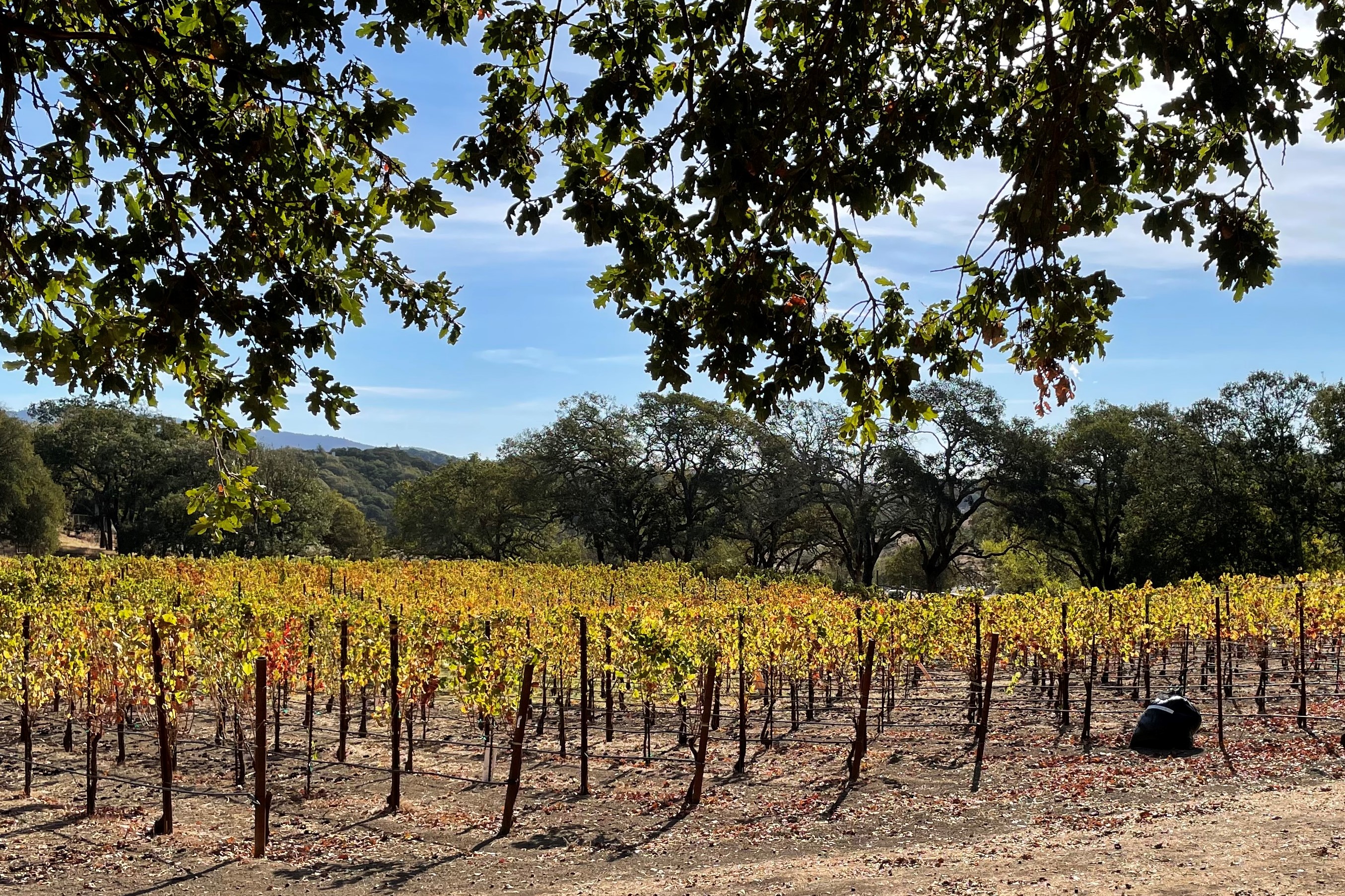No Reservations Wine Tastings: Where to Go in Sonoma
No Reservations Wine Tastings: Where to Go in Sonoma
Blog Article
Reserve Your Spot for Unforgettable Wine Tours in Sonoma 95468
Understanding the nuanced vocabulary associated with winery wine tasting is essential for both novices and seasoned connoisseurs alike. Every term brings to life the experience of tasting wine and might improve one’s appreciation of the many intricacies concerned. Wine tasting is extra than simply consuming; it's an art that entails numerous senses and feelings.
To begin with, the term "nostril" refers to the aromas one detects when smelling the wine. This is an important step as a result of the bouquet units the stage for the tasting experience. Notes of fruit, spice, earth, and wood could mingle, offering a glimpse of what the palate might affirm. Understanding "nosing" the wine can dramatically elevate one's sensory journey.
Another key facet is the term "physique." The physique of the wine describes its weight and fullness on the palate. A full-bodied wine has a strong presence and tends to linger longer after swallowing. Conversely, light-bodied wines might feel more delicate and refreshing. Recognizing the physique helps tasters assess the wine's structure and stability.
Scenic Tastings in Sonoma : A Nature Lover's Paradise 95409
The idea of "tannins" is vital in purple wine tasting. Tannins are compounds derived from grape skins, seeds, and stems, contributing to a wine's texture and getting older potential. Excessive tannin wines often end in a dry mouthfeel, whereas decrease tannin ranges yield a smoother experience. This distinction is particularly essential when pairing wines with food, as tannins can either complement or conflict with sure dishes.
In addition to tannins, "acidity" performs a significant position in the wine tasting experience. Acidity offers wine its crispness and liveliness - Insider Tips for the Hidden Gems of Sonoma County. Wines with larger acidity are typically refreshing and energizing, making them excellent companions for a big selection of meals. Recognizing acidity can drastically improve one’s food-pairing capabilities and general tasting enjoyment.
When delving into the flavour profile of a wine, one might encounter the term "finish." The finish refers back to the aftertaste that lingers within the mouth after swallowing. A long end is usually related to high-quality wines, because it signifies complexity and depth. A short end may recommend an easier wine. Understanding how to evaluate the end can reveal much a few wine's character.
Exploring the "vintage" is also integral to wine tasting terminology. The vintage denotes the year by which the grapes had been harvested. Totally Different years can yield vastly completely different results as a end result of variations in local weather conditions. For instance, a sizzling summer can produce more concentrated flavors, whereas a cooler 12 months might yield more refined, nuanced wines. Understanding vintage permits for a deeper appreciation of a wine’s origin and potential.
Create Your Ideal Sonoma Wine Tasting Adventure
The term "terroir" encompasses the geographical and environmental factors that contribute to a wine's distinctive character. Elements such as soil kind, local weather, elevation, and topography all play a task in the flavor and high quality of the wine. This connection to place helps one perceive why wines from totally different areas can taste so distinctively completely different, even when produced from the same grape variety (A Guide to Outdoor Tasting Rooms in Sebastopol).

When partaking with wines, the phrase "leg" refers again to the droplets that type on the inside of the glass after swirling. These droplets can point out the wine's alcohol content material and viscosity. Whereas observing the legs might not directly relate to the wine’s style, it adds to the overall experience and intrigue of wine tasting much less transparent.
Unwind with Breathtaking Views while Tasting Chardonnay
A extra particular term that will arise during tastings is "oak." The influence of oak barrels on wine can impart flavors such as vanilla, toast, or spice. The degree of oak aging can vary widely among wines, affecting both aroma and style. Understanding oak therapy supplies insights into the winemaker’s selections and the ensuing complexity of the wine.
In wine tasting, one may also hear the term "palate." The palate refers to the total style experience in the mouth. This encompasses sweetness, bitterness, acidity, and body. A well-balanced palate is important for a harmonious tasting experience, and recognizing any imbalances helps assess the quality of the wine.
The experience of wine tasting is greatly enriched by understanding the terminology that accompanies it. Each term serves a function, enhancing the power to convey ideas and feelings concerning the pop over to these guys wine one's experiencing. This vocabulary bridges communication between tasters, sommeliers, and winemakers alike.

To fully get pleasure from wine tasting, it's essential to engage all senses. The sight of the wine, its shade, and readability can present insight into its age and quality. Swirling the wine releases aromas that heighten the olfactory experience, while the precise tasting permits for an entire analysis of the wine's profile.
Best Wine Tasting Rooms in Sebastopol
In conclusion, understanding the detailed explanation of winery wine tasting terminology greatly enhances the experience of tasting. Each term invitations the taster to have interaction more deeply with the wine, encouraging connections to the senses, the winemakers, and the lands where the grapes are grown. This nuanced vocabulary creates a richer, more fulfilling wine tasting experience.
- Aroma refers to the scents launched by the wine, which might indicate its grape variety and influence the tasting experience.
- Tannins are natural compounds found in grape skins, seeds, and stems, contributing to the wine's structure and getting older potential.
- A end, or aftertaste, is the lingering flavor sensation that remains on the palate after swallowing, often a key indicator of quality.
- Body describes the load and fullness of wine in the mouth, usually categorized as light, medium, or full-bodied.
- Terroir denotes the unique environmental traits of a winery that affect the style and high quality of the wine, together with soil kind and local weather.
- Acidity is a crucial element that contributes to a wine's freshness and stability, impacting its growing older capability and general flavor profile.
- Vintage indicates the year grapes were harvested and performs a major role in figuring out the wine's traits, reflecting particular weather conditions.
- Decanting includes pouring wine from its bottle into another vessel, allowing it to aerate and enhancing its flavors and aromas.
- A corked wine could additionally be tainted by a faulty cork, leading to musty or off-putting flavors that detract from the wine's supposed profile.
- The term “legs” refers again to the droplets that cling to the within of a glass after swirling, typically associated with the wine's alcohol content and viscosity.undefinedWhat is the meaning of "nose" in wine tasting?undefinedThe "nostril" refers to the aroma profile of the wine, which is detected via the sense of smell. It Is a vital facet of wine tasting, as aromas can reveal lots about the grape selection, winemaking course of, and growing older.
How should I correctly taste wine?undefinedTo taste wine successfully, comply with these steps: observe the color, swirl the wine to aerate it, take a gentle sniff to seize the aromas, sip and let it coat your palate, and eventually, note the finish. This method helps in appreciating the wine’s complexity.
What are "tannins" and the way do they affect wine?undefinedTannins are pure compounds present in grape skins, seeds, and stems that contribute to a wine's structure and astringency. They can create a drying sensation in the mouth, and so they see here additionally play a role in the wine's growing older potential.
Taste the Rich Terroir of Sonoma with Chardonnay 95405
What does the term "balance" imply in wine tasting?undefinedStability refers to the harmony between the completely different components of a wine, corresponding to acidity, sweetness, alcohol, tannin, and flavor intensity. A well-balanced wine could have each of those parts supporting each other quite than overpowering the others.
What is the importance of "terroir" in wine tasting?undefinedTerroir encompasses the environmental factors—such as soil, climate, and geography—that affect the characteristics of the wine produced in a selected region. Understanding terroir helps tasters recognize the distinctive qualities that different areas impart to their wines.
What does "vintage" mean and why is it important?undefined"Vintage" signifies the 12 months when the grapes have been harvested. It is essential because it impacts the wine’s quality and traits, as weather circumstances in the course of the growing season can considerably influence flavor profiles and aromatics.
What are "legs" and what do they signify?undefined"Legs" check with the droplets that kind and run down the inside of a glass after swirling wine. Whereas they can indicate alcohol content material and viscosity, they don't determine quality—this is more about personal notion of richness.
Wine Tasting Etiquette for First-Time Visitors 95468

What does "full-bodied" imply versus "light-bodied"?undefined"Full-bodied" wines are rich, dense, and infrequently have greater alcohol content and complicated flavor profiles, while "light-bodied" wines are more delicate and refreshing with a decrease alcohol content. This distinction helps tasters perceive the expected weight and mouthfeel of the wine.
How can I establish fruit flavors in wine?undefinedTo determine fruit flavors, contemplate the aroma and taste profiles. Swirl the wine, inhale deeply to seize the bouquet, and concentrate on specific traits. Familiarity with typical fruit profiles of various grape varieties can improve this identification process.
What is "end" in wine tasting?undefinedThe "finish" refers back to the aftertaste that lingers in the mouth after swallowing. A lengthy, complicated end is usually a sign of quality in a wine, because it reflects the depth of flavor and total craftsmanship in the winemaking course of. Report this page